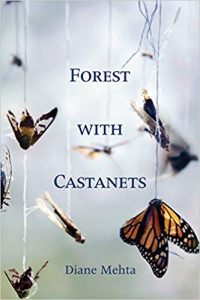Swimming Laps on the Page with Sonnets
 When I started swimming last year, I could only do the sidestroke, the backstroke, and a flailing version of the breaststroke, which entailed me arching my face out of the water like a horse and frantically kicked my arms and legs. I was too spastic to do the crawl, despite years of lessons at pools, at camp, and even at the local YMCA as an adult. The crawl had too many rules, and they were all in play at once. For a long time, my body could never figure it out.
When I started swimming last year, I could only do the sidestroke, the backstroke, and a flailing version of the breaststroke, which entailed me arching my face out of the water like a horse and frantically kicked my arms and legs. I was too spastic to do the crawl, despite years of lessons at pools, at camp, and even at the local YMCA as an adult. The crawl had too many rules, and they were all in play at once. For a long time, my body could never figure it out.
Like the crawl, the sonnet—fourteen rhyming iambic pentameter lines—can seem like a mechanical and maddeningly repetitive exercise. Both have dozens of moving parts. And both, alas, are easy to do badly. You can do a serviceable crawl by throwing your arms straight up and slapping them down like playing cards on the surface of the water, and similarly, you can whip off a serviceable sonnet by tossing a confetti of words onto the page in a fit of enthusiasm, then dutifully glueing on the end rhymes.
I ask the same questions of each: Am I going too fast to breathe? Do I pause at the end of the line, or lane, or leap immediately into the next one? Do I start off strong and then slow my pace, or vice-versa?
I did finally master the crawl, learning to stitch my body through the water the same way I learned to stitch together the lines of a sonnet. These days, I am swimming fourteen laps daily in the pool—and it can be no coincidence that I have unconsciously echoed the fourteen lines of the sonnet. But why am I drawn to this most pedigreed of poetic forms? I think it’s because the sonnet’s formal limits seem to reflect our own—life, too, is circumscribed and full of impediments. The sonnet has rules you have to master, and once you do, you are free to swim.
Crucially, the sonnet originated as a love-lyric (sonnetto or little song) in 13th-century Sicily. It was soon taken up by Dante and Petrarch, adapted to English by Wyatt, and popularized in Elizabethan England.
Countless poets in countless lands took a crack at it, and true to form, they tended mostly to sound the amorous alarm: Something is wrong with love!
In the modern era, of course, some poets turned the sonnet to other uses. Gwendolyn Brooks made it into a vehicle for biting social commentary about race in America in The Children of the Poor (1949). Yet it has retained its historical connection to intimate matters. John Berryman, cheating roué, dazzled the reader with verbal pyrotechnics in his lusty peacock-walk of a sequence, Berryman’s Sonnets (1967), which documented not only his palpitating heart but his ruined conscience (and marriage).
My approach to the sonnet is to recognize tradition but make it mine. My own series, Unholy Sonnets, resembles standard love poetry on the surface—but because love can be so skewed and so impeded, I have skewed and impeded the flow of the lines. When I wrote this series, it was an act of self-reliance, to structure my days and to filter unhappiness out. Writing sonnets kept me buoyant. I wanted my sonnets to ask questions, argue a lot, demand more of myself, philosophize.
My fourteen lines rhyme, but not according to the Shakespearean or Petrarchan playbook. I’m not interested in singsong regularity but in a certain colloquial chaos. To accomplish that, I look for slant rhymes (which match the final consonants in two words, but not necessarily the vowel sounds)—and place them within a line rather than at the end. I pair sounds together throughout, and repeat them, or surprise with an end-rhymed couplet not when the form demands it but when there is an irresistible confluence of meaning and rhythm. Also, I spent so many years immersing myself in the cadences of iambic pentameter that by now, it naturally shapes my phrasing. It is the language I speak, as instinctive as the crawl. (Well, maybe I have a ways to go on the crawl, since I still breathe too little and kick too much.)
I think the best you can achieve with a sonnet sequence is self-reliance on the page. Mine riff on John Donne’s nineteen Holy Sonnets, a dialogue with God in which Donne explores and anatomizes his faith through the metaphor of an erotic relationship. Donne wrote his sonnets in a time of personal turmoil and self-doubt over his religious convictions. Who will I become? he asked. Why am I so sinful?
I asked myself the same. I also took Donne’s turbulent, churning idiom as a model. He writes in full-throated, fist-shaking confidence, controlling the lines through a feverish pile-up of verbs, accented syllables, and blunt-force phrasing.
Sometimes he seems to be shoving off one line to begin the next, as if he’s doing a flip-turn in the swimming pool. His pinball rhythms yank us around in almost a bodily fashion: “Batter my heart, three-person’d God, for you / as yet but knock, breathe, shine, and seek to mend.”
And yet somehow, the sturdy sonnet holds all of it in. I read his repeatedly while writing mine, vivified by Donne’s nerve and command. There are other contemporary sonneteers who have electrified me, very much including Seamus Heaney, whose Glanmore Sonnets taught me how much could be accomplished with a single, exquisitely sculpted line. But Donne remains a kind of beacon, with his self-interrogating rhetoric and, in the face of the biggest emotional earthquakes, his endurance.
—
Find out more about Diane on her website https://www.dianemehta.net/
Follow her on Twitter https://twitter.com/DianeMehta
 About FORESTS WITH CASTANETS
About FORESTS WITH CASTANETS
In her debut book of poems, knit together with personal essays, Mehta explores her own cultural history― Indian Jainism and American Judaism―as well as her ideas about faith, feminism, and family.
Category: How To and Tips
























Great article about women and swimming!
Thank you so much for reading it!